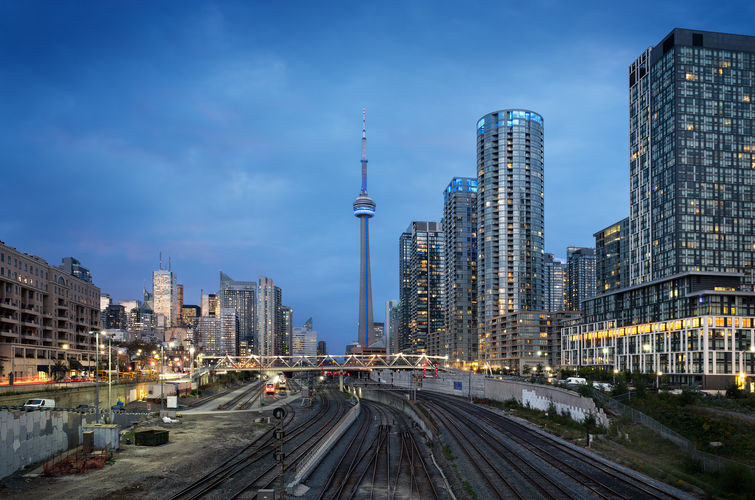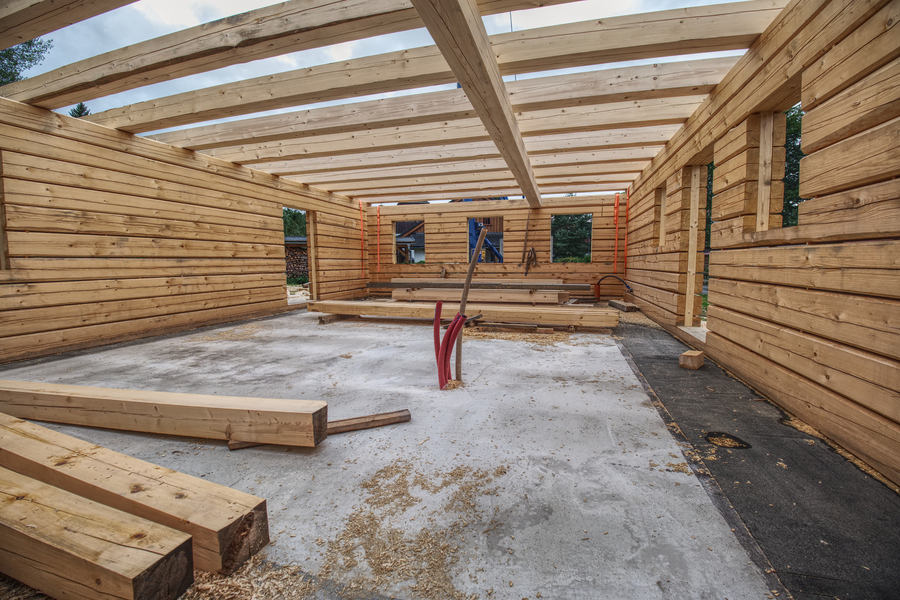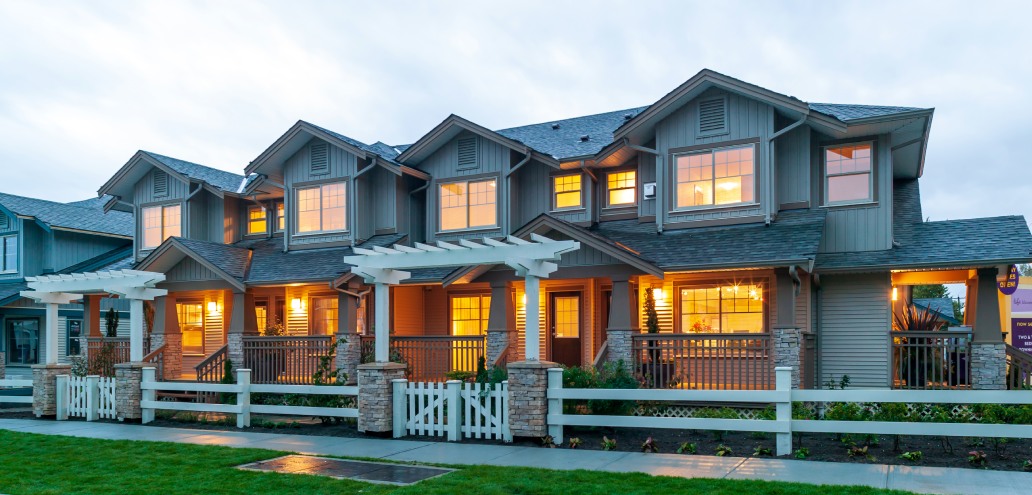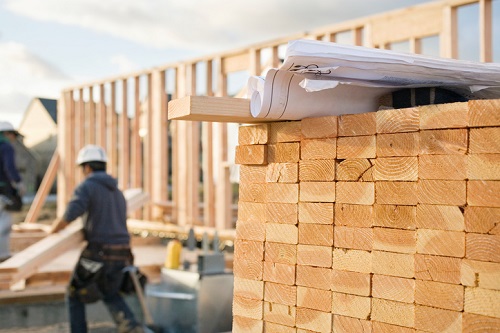Mass timber is touted as an eco-friendly alternative to the traditional concrete and steel way of constructing buildings, and with good reason.
Multi-storey buildings made of wood, a renewable material, reduce carbon dioxide emissions by 40-50% and considering Canada’s 2030 Emissions Reduction Plan—which is targeting a 40% decrease below 2005 levels—mass timber construction is growing in popularity. The timber doesn’t just create a warm ambiance; it interacts with the interior climate, so when humidity decreases throughout the year, the timber absorbs and releases it.
In Toronto, mass timber residential buildings are slowly growing in popularity, however, little attention has been paid to the positive impact such buildings will have in the commercial real estate sector.
For evidence, look no further than the 300,000 sq. ft Sara Kulturhus cultural centre in the northern Swedish town of Skellefteå recently reviewed at the Green Building Festival sponsored by Sustainable Buildings Canada in Toronto. At 20 storeys, Sara Kulturhus is one of the tallest mass timber buildings in the world, and its impact locally has been immeasurable, rejuvenating the town square with a theatre that can be reconfigured to hold anywhere from 300 to 900 spectators. It also houses a library, a youth centre, and two visual art galleries.
There’s also a 205-room hotel on the premises, as well as a spa, gym, and restaurants, all of which have garnered Sara Kulturhus, awards the world over.
Oskar Norelius, an architect and partner at White, the firm that designed Sara Kulturhus—he was also co-lead on the project—told CREW that the project was germinated by a desire to meaningfully lessen environmental degradation—a problem as serpentine as they come—and, by extension, to create something that would be impressionable on a global scale so that it may inspire similar projects.
“We started using mass timber because of the environmental issue. Over these last years, we’ve learned more about how the real estate and construction industries affect the climate,” Norelius said. “Real estate and construction account for 40% of emissions in Sweden, and it’s similar in other European countries. To reach the ambitions of the Paris Accords, we have work to do.”
A crucial facet of the sustainable development approach to Sara Kulturhus was sourcing wood—which Skellefteå has an abundance of—locally. Moreover, the project’s construction created a slew of jobs in the green economy and even catalyzed additional activity with Europe’s largest battery factory being built in Skellefteå.
“People are really happy about that,” Norelius said. “It was our idea to give them a public living room in the cultural centre.”
Norelius added that one of Sara Kulturhus’s ambitions is to rejuvenate the town centre and demonstrate a model for inciting growth in secondary and tertiary cities instead of large urban centres like, as has been the case in Sweden, Stockholm, Gothenburg, or Malmö.
And it seems to be working.
“Whenever I go there, I meet so many people in the main entrance of the building, and that design was specifically the idea, to get people to gather,” Norelius said. “We’re being invited to design competitions all over the world now. We won a project in the Baltics where we are doing a transformation of a brewery into a cultural hub and timber structure office building, and there we are showing this realized building to authorities to get officials to push timber further than is allowed there.”

Toronto Keen On Mass Timber
The city council in Canada’s largest city has shown a willingness to increase density for residential mass timber construction, but in the commercial sector, there are already exceptional examples demonstrating the potential for scaling.
Hines has developed the T3 brand after watching tenants gravitate towards commercial buildings that have a vintage feel of exposed brick and beam. However, Hines is taking it further and spending a couple of years on research and development with an eye on next-generation office space, says Myles Millard.
“Our impetus for moving into timber was pretty simple when you boil it down: we saw what our tenants wanted, and that was these authentic spaces with brick and beam-style warehouses, but they lacked new building amenities and building systems that competitive tenants now demand,” the director of Hines said. “We set out to create this hybrid structure that’s a mix of that old authentic feel by bringing wood into the building and pairing it with a modern set of amenities, modern technology, modern parking, a gym, lounges, HVAC systems.”
Another crucial aspect of Hines’ foray into mass timber construction was sustainability, Millard added.
“It was huge for us and we know it’s critically important for our tenants as well, so that combination made it a perfect match for what we wanted to do with a lot of our buildings here,” he said.
Hines is building two T3 buildings in Toronto, one downtown in East Bayside and the other on Sterling Rd. near Roncesvalles Village.
The former is comprised of two 10-storey mixed-use towers with 251,000 sq. ft of office space and 110,000 of ground-level retail, and it will include a condominium component courtesy of Tridel. Millard says it will be among the tallest commercial timber buildings in North America when it’s completed.
The two-phase Sterling Rd. development, which will be eight and six storeys, respectively, is under construction and will feature 275,000 sq. ft of office space, while an eight-storey third phase will offer about 115,000 sq. ft. of the same.
The T3 brand has had success in American cities. In Minneapolis, Amazon is a tenant at T3 North Loop, while Facebook has set up shop at T3 West Midtown in Atlanta. The brand has proven so successful, in fact, that there are projects underway in Vancouver, Austin, Denver, Spain, and Australia. In Toronto, Millard says East Bayside is already proving a hit with the city’s tech community.
One of the reasons mass Timber is gaining popularity is because of how unique and evocative building interiors can be.
“The bio-select design is new school thinking where it is understood there are certain reactions in your body when exposed to nature, with the effects that people sleep better at night, blood pressure is lower and cognitive function improves,” Millard said.
“It’s like being in a forest or working in a park and you get the same knock-on health benefits with improved cognitive abilities, and people feeling better when they’re in the building. That’s why we love running tenants through the buildings; there’s this initial ‘wow’ moment. Nobody touches concrete in buildings, but every person touches the timber in our buildings. We build them with very large windows so that a lot of natural light comes in and we marry that with the design component so you feel like you’re in nature while working in an office setting.”
Neil Sharma is the Editor-In-Chief of Canadian Real Estate Wealth and Real Estate Professional. As a journalist, he has covered Canada’s housing market for the Toronto Star, Toronto Sun, National Post, and other publications, specializing in everything from market trends to mortgage and investment advice. He can be reached at neil@crewmedia.ca.









